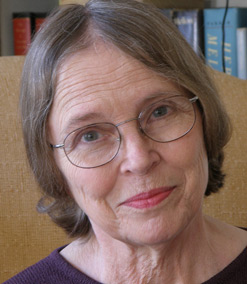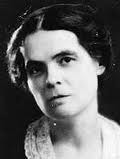
The History of Little Goody Two-Shoes is a children's story published by John Newbery in London in 1765. The story popularized the phrase "goody two-shoes" as a descriptor for an excessively virtuous person or do-gooder. [1]

The History of Little Goody Two-Shoes is a children's story published by John Newbery in London in 1765. The story popularized the phrase "goody two-shoes" as a descriptor for an excessively virtuous person or do-gooder. [1]
The fable tells of Goody Two-Shoes, the nickname of a poor orphan girl named Margery Meanwell, who goes through life with only one shoe. When a rich gentleman gives her a complete pair, she is so happy that she tells everyone that she has "two shoes". Later, Margery becomes a teacher and marries a rich widower. This serves as proof that her virtue has been rewarded and her wealth earned, a popular theme in children's literature of the era. [2]

The anonymous story was published in London by the John Newbery company, a publisher of popular children's literature. [3] In his introduction to an 1881 edition of the book, [4] Charles Welsh wrote:
Goody Two-Shoes was published in April 1765, and few nursery books have had a wider circulation, or have retained their position so long. The number of editions that have been published, both in England and America, is legion, and it has appeared in mutilated versions, under the auspices of numerous publishing houses in London and the provinces, although of late years there have been no new issues.
The story has been attributed to the Irish author Oliver Goldsmith, though this is disputed. Because Goldsmith frequently wrote for pay and because of his copious fiction in essays (e.g., The Bee and Citizen of the World ), the attribution to Goldsmith is plausible. Washington Irving was one supporter of this attribution; he wrote: "Several quaint little tales introduced in Goldsmith's Essays show that he had a turn for this species of mock history; and the advertisement and title-page bear the stamp of his sly and playful humor." [5] The book has also been attributed to Newbery himself and to Giles Jones, a friend of Newbery. [6]
Although The History of Little Goody Two-Shoes is credited with popularizing the term "goody two-shoes", the actual origin of the phrase is unknown. For example, it appears a century earlier in Charles Cotton's Voyage to Ireland in Burlesque (1670): [7]
Mistress mayoress complained that the pottage was cold;
'And all long of your fiddle-faddle,' quoth she.
'Why, then, Goody Two-shoes, what if it be?
Hold you, if you can, your tittle-tattle,' quoth he.
The name is used herein to point out the mayoress's comparative privilege; "Goody" (a shortening of "Goodwife"), [8] being the equivalent of "Mrs." and "Two-shoes", implicitly comparing her to people who have no shoes.

Oliver Goldsmith was a well-known Anglo-Irish novelist, playwright, dramatist and poet, noted for his novel The Vicar of Wakefield (1766), his pastoral poem The Deserted Village (1770), and his plays The Good-Natur'd Man (1768) and She Stoops to Conquer. He is thought by some to have written the classic children's tale The History of Little Goody Two-Shoes (1765).

The John Newbery Medal, frequently shortened to the Newbery, is a literary award given by the Association for Library Service to Children (ALSC), a division of the American Library Association (ALA), to the author of "the most distinguished contributions to American literature for children". The Newbery and the Caldecott Medal are considered the two most prestigious awards for children's literature in the United States. Books selected are widely carried by bookstores and libraries, the authors are interviewed on television, and master's theses and doctoral dissertations are written on them. Named for John Newbery, an 18th-century English publisher of juvenile books, the winner of the Newbery is selected at the ALA's Midwinter Conference by a fifteen-person committee. The Newbery was proposed by Frederic G. Melcher in 1921, making it the first children's book award in the world. The physical bronze medal was designed by Rene Paul Chambellan and is given to the winning author at the next ALA annual conference. Since its founding there have been several changes to the composition of the selection committee, while the physical medal remains the same.
This article presents lists of the literary events and publications in 1765.

John Newbery, considered "The Father of Children's Literature", was an English publisher of books who first made children's literature a sustainable and profitable part of the literary market. He also supported and published the works of Christopher Smart, Oliver Goldsmith and Samuel Johnson. In recognition of his achievements the Newbery Medal was named after him in 1922.
Goody, Goodies, or Goody's may refer to:

Mary Louisa Molesworth, néeStewart was an English writer of children's stories who wrote for children under the name of Mrs Molesworth. Her first novels, for adult readers, Lover and Husband (1869) to Cicely (1874), appeared under the pseudonym of Ennis Graham. Her name occasionally appears in print as M. L. S. Molesworth.

The Sketch Book of Geoffrey Crayon, Gent., commonly referred to as The Sketch Book, is a collection of 34 essays and short stories written by the American author Washington Irving. It was published serially throughout 1819 and 1820. The collection includes two of Irving's best-known stories, attributed to the fictional Dutch historian Diedrich Knickerbocker: "The Legend of Sleepy Hollow" and "Rip Van Winkle". It also marks Irving's first use of the pseudonym Geoffrey Crayon, which he would continue to employ throughout his literary career.

Natalie Zane Babbitt was an American writer and illustrator of children's books. Her 1975 novel Tuck Everlasting was adapted into two feature films and a Broadway musical. She received the Newbery Honor and Christopher Award, and was the U.S. nominee for the biennial international Hans Christian Andersen Award in 1982.

Margery Williams Bianco was an English-American author, primarily of popular children's books. A professional writer since the age of nineteen, she achieved lasting fame at forty-one with the 1922 publication of the classic that is her best-known work, The Velveteen Rabbit. She received the Newbery Honor for Winterbound.

Cornelia Lynde Meigs (1884–1973) was an American writer of fiction and biography for children, teacher of English and writing, historian and critic of children's literature. She won the Newbery Medal for her 1933 biography of Louisa May Alcott, entitled Invincible Louisa. She also wrote three Newbery Honor Books.
Armstrong Wells Sperry was an American writer and illustrator of children's literature. His books include historical fiction and biography, often set on sailing ships, and stories of boys from Polynesia, Asia and indigenous American cultures. He is best known for his 1941 Newbery Medal-winning book Call It Courage.
Adam of the Road is a novel by Elizabeth Janet Gray Vining. Vining won the Newbery Medal for excellence in American children's literature in 1943 from the book. Set in thirteenth-century England, the book follows the adventures of a young boy, Adam. After losing his spaniel and minstrel father, Adam embarks on a series of escapades throughout medieval England. The book is illustrated by Robert Lawson.

Elizabeth Wright Enright Gillham was an American writer of children's books, an illustrator, writer of short stories for adults, literary critic and teacher of creative writing. Perhaps best known as the Newbery Medal-winning author of Thimble Summer (1938) and the Newbery runner-up Gone-Away Lake (1957), she also wrote the popular Melendy quartet. A Newbery Medal laureate and a multiple winner of the O. Henry Award, her short stories and articles for adults appeared in many popular magazines and have been reprinted in anthologies and textbooks.
Susannah Carter was the author of an early household management and cookery book, The Frugal Housewife, or, Complete woman cook. Little more is known than that Carter was from Clerkenwell in London as stated in the title page of the first edition.
Events from the year 1765 in Great Britain.
Winterbound is a children's novel by Margery Williams. It is a family story set in a Connecticut farmhouse during the Great Depression. Nineteen-year-old Kay and sixteen-year-old Garry are in charge of the house and their younger siblings while their parents are away during the winter. The novel, illustrated by Kate Seredy, was first published in 1936 and was a Newbery Honor recipient in 1937.

John Marshall (1756–1824) was a London publisher who specialized in children's literature, chapbooks, educational games and teaching schemes. He called himself the "Children's Printer" and children his "young friends". He was pre-eminent in England as a children's book publisher from about 1780 to 1800. After 1795, he became the publisher of Hannah More's Cheap Repository Tracts, but a dispute with her led to him issuing a similar series of his own. About 1800 Marshall began publishing a series of miniature libraries, games and picture books for children. After his death in July 1824, his business was continued either by his widow or his unmarried daughter, both of whom were named Eleanor.

The Traveller; or, a Prospect of Society (1764) is a philosophical poem by novelist Oliver Goldsmith. In heroic verse of an Augustan style it discusses the causes of happiness and unhappiness in nations. It was the work which first made Goldsmith's name, and is still considered a classic of mid-18th-century poetry.

Elizabeth Somerville was a Scottish novelist who wrote primarily for children. She was also a school mistress.